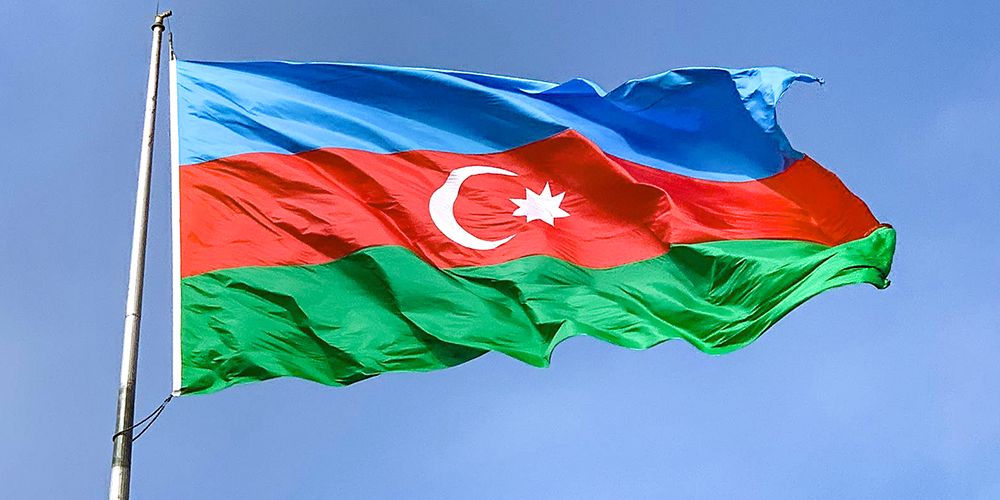Search

Publications
Azerbaijan in the Organization of Turkic States: sub-regional projects in the system of post-Soviet integration CIS/EAEU/SCO

By the end of 2022, the architecture of integration in the FSU zone in general maintains its previous features inherent for 2010-s: the Organization of the Turkic States (OTS) is gradually crystallizing within the CIS/EAEU area. The pace of all these processes has increased dramatically. The interconnections of the states within the «parent» integration structures (CIS/EAEU) are rather quickly drawn into the global macro-economic and security agenda via the Shanghai Cooperation Organization (SCO).
Sales turnover growth and interaction of the economies
Simultaneous strengthening of collective integrational structures and symbiotic mutual expansion of the influence of Turkey, Russia and China is now taking place in their common Eurasian domain.
The main impetus for re-organization of interconnections in the Eurasian region was a systemic pivot of transport corridors of the Russian economy: from the West to the South, Central Asia, the Caspian Region and the Far East. This process started in 2020 during the pandemic and then advanced in 2022 during the confrontation between Russia and Euro-Atlantic alliance.
The interpenetration and strengthening along the integration lines in the post-Soviet domain is taking place simultaneously with the freezing of Russia – the EU relations.
Central Asia is strengthening its positions driven by the economic growth in Kazakhstan and Uzbekistan and more and more finds itself in the system of Russian and Chinese orbits, the South Caucasus – in the system of Russian and Turkish orbits. At the same time, Iran is getting more and more value as the transportation hub on the way to the Indian Ocean and on the way of the North-South International Transport Corridor (ITC), in which not only the RF is interested, but Central Asia as well.
These points may be illustrated by numerous examples, and we will review just several indicators.
The sales turnover between Russia and Uzbekistan is forecasted to achieve USD 8.5 bn by the end of 2022. Russian investment into Uzbekistan economy grew up to USD 10 bn starting from 2019. They went into oil-and-gas industry and energy generation/transmission, into telecommunications and agribusiness. The Russian Federation is second after China in the foreign trade.
The share of Russia in the Kazakhstan sales turnover in 2021 made 23.9% (USD 24.2 bn), but during seven months of 2022 it already grew up to 27.9% (USD 20.7 bn), exceeding the share of China. By this August, the sales turnover between RoK and PRC made USD 13.5 bn, which is 38.3% yoy growth (for the same period in 2021 it made USD 9.7 bn).
At the same time, the re-export to Russia definitely accounted for a big part of the growing import from China to Kazakhstan (22.6% for seven months of 2022 or circa USD 1 bn in cash equivalent), and the same is true about the companies having relocated their official registration from the RF to Kazakhstan. The following categories account for the main growth of export from Kazakhstan (19.4%) : machines, equipment, transportation vehicles, instrumentation (compare: 7M 2022 – USD 3.1 bn, 7M 2021 – USD 2.6 bn). There are no other reasons to explain such upsurge.
The foreign trade proportions practically did not change in Azerbaijan. Its key export destinations remained the same: Italy – 41.7%, Turkey – 12.7%, Russia – 4.15%, CIS overall – about 8%. China’s influence is evident only in import: PRC this year became the leader among the importers to Azerbaijan.
However, if we take the non-petroleum products export from Azerbaijan, Russia is still the leader despite higher growth rates of the Turkish destination: in 2022 Turkey accounted for 24.3% of such products, and Russia – for 28.7%.
Added complexity of the integration agenda in 2020-2022
By the end of 2010s, the trade and economic interaction with Russia, and even broader – with the entire free trade zone within the Commonwealth visa-free area remained the key vector of developing the commodity (non-resource) export for Azerbaijan, primarily in the spheres of agribusiness and petrochemistry.
At the same time, Baku for many years was maintaining the focus of investment partnership on Turkey, and the construction of oil and gas pipelines, as well as of the major refinery in Turkey (Star) contributed to that.
After the Second Karabakh War, Turkey strengthened its positions as a meaningful trade partner. Strictly speaking, the serious rapprochement along the lines of visa-free travelling and duty-free trade was evident even before the war, in February 2020, at the 8th session of the Turkish-Azerbaijani inter-government commission on economic cooperation. The target was established at that session – mutual sales turnover of USD 15 bn per annum. At the post-war 9th session of this commission the Road Map comprising 138 points was adopted. The recovery efforts in the liberated territories were named a priority. In this respect, at first there was a certain misbalance for other partners of Baku’s foreign economic activities: the Turkish companies were awarded the most important contracts for building the road network in East Zangezur and Karabakh regions; on top of that, investment agreements for mining ore in these regions were executed with the Turkish companies (which is especially important in view of global shortage of copper and the development of EVs manufacturing).
Nevertheless, the expansion of Azerbaijani-Turkish partnership has its limits. By the OTS Summit in November, the expansion of the preferential trade agreement between Azerbaijan and Turkey was announced. The first stage came into effect starting from March 2021; it demonstrated rather modest results, but it was obviously designed in favor of Baku: as of October 2022, the export of Azerbaijani products to Turkey under this agreement was USD 519 mln, at the same time, the export of Turkish products to Azerbaijan was USD 14.8 mln. On the other hand, we need to take into account that it was the first stage and it covered only 15 categories of commodity code listing.
Despite the 2021 forecasts by some observers, including the author of this article, Russia maintains the leading positions in Azerbaijani export of the first and second stage processed commodities. Let us once again list the interim 2022 results: Russia – USD 602.2 mln (2.7% growth), Turkey – USD 511.6 mln (12.4% growth). Nevertheless, the growth rate in these categories is in favor of Turkey.
If we compare the projects included into Russian-Azerbaijani and Turkish-Azerbaijani cooperation projects, the balance of the new projects will definitely be in favor of Turkey.
The following agreements may be highlighted among the ones signed between Baku and Ankara in 2021:
- The Ministry of Economy of Azerbaijan, Eti Bakýr AS and Artvin Maden Isletlemeri – on cooperation in the mineral extraction sphere;
- ÑÒÑ Holding and Zorlu Holding – on cooperation in the sphere of agriculture, construction and textiles industry;
- CTC Holding and Varnet Cam – on implementing the «smart greenhouse» projects in Azerbaijan;
- CTC Holding and Aslan Yapi – on expansion of cooperation in the sphere of agriculture, construction and household appliances;
- AS Group Investment and Reta Line Mimarlýk Muhendislik Insaat – on cooperation in the sphere of architecture and design;
- BETEKS and Koñaklar – on manufacturing products under «Koton» and «DeFacto» brands in Azerbaijan;
- Baku textile factory and Baku Orme – on establishing four enterprises for dying fabrics and knitwear.
At the same time, we need to take into account that the products manufactured under these agreement will be to a great extent sold in the Russian market. It is fair to say that the Azerbaijani foreign trade in the first and second stage processed commodities is within the Russian-Turkish economic domain (the sales turnover between the RF and Turkey may achieve USD 80 bn by the end of the next year).
CIS/EAEU and OTS – multiplying the advantages
At the same time, Azerbaijan continues rather close and methodical effort of cooperating with Russia and the Commonwealth of Independent States. Let us not forget that the economic agenda of the OTS is practically duplicating the one of CIS/EAEU.
A few areas in CIS, the full-fledged interaction in which previously were limited for Baku by the Karabakh conflict, are now getting «the second breath»: they are such spheres as security, cross-border interaction, joint actions and programs of the Defense Ministries, as well as a number of areas in trade and transportation.
This potential may be utilized in the scenario of interaction with Armenia – even the minimal one.
Even though there is still a very long way for Baku and Yerevan to normal relations, the critical barriers in the form of Armenian occupation of part of the Azerbaijani territory were removed.
We need to remember that in the sphere of security during the period of CIS existence the legal framework was signed, which was equivalent to the CSTO framework. Another thing is that it was not applied to practice, and that is why CSTO is now perceived as the only format of practical implementation of the common security domain of the post-Soviet region.
The interface of industrial standards and technical regulations including the digital transition have been achieved long ago, as well as the coordinated measures within the infrastructural policy in electric energy and transportation spheres.
This agenda is practically fully duplicated in OTS.
The draft free trade agreement in the sphere of services and investment signed in the course of the recent summit in Astana is practically adjusted to the OTS realities, taking into account that Azerbaijan, Kazakhstan, Uzbekistan, plus Turkmenistan are key participants of the CIS/EAEU domain.
This document is in the center of Russia’s attention considering that in future it will allow for the CIS common market and provide for barrier-free exchange of investment, pushing the CIS members not being the EAEU members to closer coordination. Naturally, it will be setting new realities for the Organization of Turkic States as well by opening new opportunities for entrepreneurial initiative and for major infrastructural projects improving the interconnections of the members of the Big Eurasian Commonwealth (the process of engaging the economies and companies of the post-Soviet Eurasia into common value chains and transportation chains).
Now these processes are incentivized by the re-orientation of the Russian export and import, which, in its turn, stimulates the transport corridors development across the entire Big Eurasia. Moscow obviously understood the need to support and incentivize the development of the entire network of the Trans-Eurasian transport corridors across the CIS territories along both East-West and North-South vectors. They are mutually complimentary.
Previously there were discussions about competition between these routes, but today, according to Vladimir Putin, «this is of interest not only for Russia, but for all the states, our neighbors, our friends, because it enhances our transport opportunities and common economic benefits».
The agreements discussed and signed in CIS during the summits of 2021-2022 practically coincide with the parameters of the Azerbaijani international agenda.
In the sphere of interparliamentary cooperation there are possibilities for further improvement of the modern legal framework, for sharing the accumulated experience and the best practices. In 2020-2021-2022, Uzbekistan chairs CIS (previously it was Belarus), then Kazakhstan picked up the baton, and these are the three most promising partners for Azerbaijan in the post-Soviet Eurasia.
The «historic policies» in CIS and OTS also coincide. They have common interests in retention of the ideas «to revise» the history, plus common memory of counteracting fascism, and these two CIS ideological bonds are practically the same as OTS concepts.
We may remember the intense debate between Ilham Aliyev and Nikol Pashinyan at the session of the Council of the Heads of States in December 2019, where this topic in the context of the Nazi collaborator and Hitlerian criminal Garegin Nzhdeh glorification in Armenia was sharply criticized by absolutely all CIS members.
Another serious topic for enhancement of quasi-ideological interaction is information security – blocking extremist and radical social media. This is aligned with the issue of domestic political stability and different approaches to keeping the balance between freedom and security. In the CIS/OTS domain we can see if not absolutely common, then very close approaches, which puts us into a circle between totalitarian control like in PRC and freedom «well over the top» in North-Western Europe.
At the CIS summit in Astana the decision was made about the new version of the Regulation on the CIS Human Rights Commission, which will have an impact on the domestic political situation in the countries of this region in the period of election cycles.
Observers from the CIS Parliamentary Assembly will now become the main criterion for the honest election instead of OSCE/ODIHR observers. The opinions of the CIS PA observers over the recent years are perceived as the key element of the international approval of the next presidential tenure of the national leaders in CIS countries (the agreement was signed in Astana about forming the Advisory Council of the heads of election commissions of the CIS member states). Another sphere of potential application of efforts on behalf the CIS Human Rights Commission are conflicts with the CIS/OTS expat communities living in the neighboring countries: cases of various crimes, administrative pressure and other problems.
Finally, there are interesting developments in CIS security. In December 2021, the agreement was signed about the joint engineering unit for humanitarian demining of the armed forces of the CIS member countries. In November 2022, the decision was made to make the Council of the CIS Defense Ministers and the Coordination Council for engineering support in charge of these activities. It is clear that direct use of such unit is possible exactly in the territory of Azerbaijan in the zone of the former Karabakh conflict, where millions of Armenian mines remain in the liberated land. At the same time, there will be a possibility to use this unit within international programs with participation of Turkey. Again, it will be an area of specific direct interaction in the CIS-OTS pair.
Another group of documents important for interaction includes the decision on the Program of CIS member states cooperation in strengthening the border security at the external frontiers in 2021-2025 and the decision on the List of commands to be included into the forces of the CIS members’ border troops and other forces assigned to settle (liquidate) crisis situations at the external frontiers. This is only one part of the current agenda reviewed at the expert level, even though it has not yet been used for practical purposes.
The field of application for Azerbaijani initiatives
One of the scenarios of the Commonwealth development is the enhancement of trans-regional connections (in trade, industry and investment) along the lines of East-West and North-South ITCs. In fact, today this scenario has all the chances to be implemented. For its partners in CIS/OTS Baku could offer the idea of the North-South partnership (the INSTC Partnership). Such initiative could make an important Azerbaijan’s contribution inti the economic concentration of CIS/OTS/EAEU in a broader field: the «Caspian Five», and further away states for the expansion of the post-Soviet domain, such as India and the Persian Gulf countries. It could be started with a joint Memorandum or with some other format postulating such need and its importance for the new Eurasian economy.
The CIS/OTS legal framework is the best for implementing Ilham Aliyev’s idea of the «Platform for the Caucasus Cooperation and Development». It may be connected to the CIS agenda as the mechanism for aligning different regional actions to achieve the maximum synergy effect for the regional economies and social spheres.
The following areas may be chosen as the pilot ones:
- sustaining of population, health and well-being of people;
- improving the conditions and opportunities for self-fulfillment and talent development;
- best practice sharing for comfortable and safe living environment;
- protection of decent labor and successful entrepreneurship;
- digital transformation of the region.
By the end of 2022, another interesting development took shape: the CIS region becomes a reliable strategic partner for three states in the same time – Russia, China and Turkey. Actually, this reality presented itself within this «triangle» over the recent 15-20 years, when it became obvious that the three main Eurasian countries are moving towards developing the alternative for the domination of the West.
That is why, given all the frictions among the post-Soviet states, this domain is fully in the internal «orbit» of these three leaders. They are all interested in the stability of their «internal field».
If we look at the spheres of interaction of Russia and China, Russia and Turkey, we can see the system of ramified networks: from the very top to the bottom layers starting from annual meetings of the leaders and finishing with the connections between universities, research institutes, enterprises, corporations and military groups. In CIS/OTS/EAEU, they know, understand and take into consideration each other’s interests. Their common geopolitical dome – SCTO, which is currently in the stage of formation, is germinating from the inside of CIS covering the big region of Eurasia.







